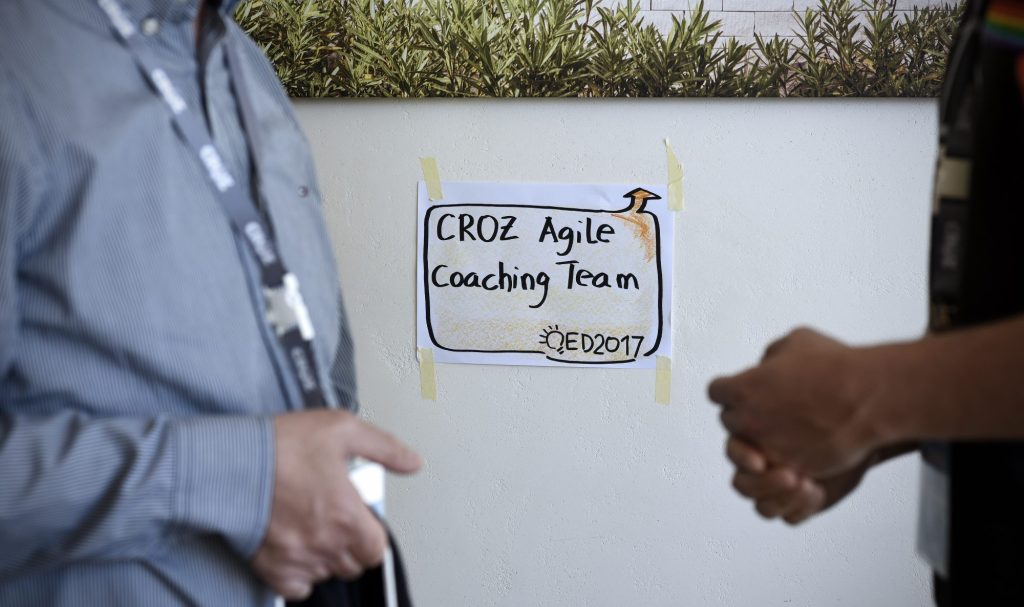Rare are terms used in the business world today that are more ambiguous and abstract than coaching. Since the concept is very abstract in itself, there is a myriad of different definitions. And all of them are correct in one way or another. For the purposes of this post, let’s take John Whitmore’s definition:
We all understand what this means in theory – the real problems lie in putting it into practice. What happens when you invite someone out for a coffee and tell them, “Listen, I invited you for a coffee to unlock your potential”? I haven’t personally tried this technique, but my gut tells me that at some point it involves HR and that’s not a pretty sight.
We’re all big fans of actionable tips here at CROZ, so let’s look at the possibilities in such a situation. How do you coach people through coaching conversations and how do you control the structure and content of these types of conversations?
Structure…
A coaching conversation is simpler and far more effective when it is structured. Structure brings predictability and assures the coach that conversation is well on track despite possible sidetracking. Good practices of leading coaching conversations include several conversation phases (Contact, Contract, Timeout, and Summary), active listening and being able to skillfully juggle between the contents and the metalevel of the conversation. This might seem complicated but trust me, it really isn’t. Our colleagues from agile42 describe it well in their article. Check it out.
…and Content
OK, now that we have a structure, what about the content of the conversation? A good rule of thumb is that the coach is responsible for the conversation’s structure while the coachee is responsible for its content. Having that in mind, it’s the coach’s job to ask good questions in order to understand the situation and ignite the coachee’s creative thought process in order to get him to a possible solution. Experienced coaches have their own list of questions they rely on based on years of coaching experience.
(How to better phrase the questions we ask during coaching sessions is a very broad topic. There is a lot of psychology going on while formulating such questions, so we’ll leave that for another post. The good news is that there are still a lot of specific rules and guidelines. It is science, as much as art!)
But if you’re starting from the scratch and haven’t found an experienced coach who you could rob of their list of questions, a good starting point are the questions formulated by Michael Bungay Stanier in his book The Coaching Habit: Say Less, Ask More & Change the Way You Lead Forever. Michael lists 7 questions that will make the coachee think, all the while clearly separating the roles and responsibilities of the coach and the coachee in finding and implementing a solution.
The questions are as follows:
1. What’s on your mind? Opens up the conversation and invites the coachee to choose a certain topic.
2. And what else? The first topic brought up by the coachee is often not the only one nor the most important one. This question allows us to broaden our range; we are trying to see the bigger picture and discover other topics on our coachee’s mind. It’s perfectly fine to pose this question multiple times in a row until the coachee brings up everything on their mind.
3. What’s the real challenge for you here? If the coachee brings up a bunch of topics that are not really connected, this question should return their focus onto the most important one.
4. What do you want? Humans are interesting creatures that have different wishes and needs. This question explores the coachee’s motivation in order for us to better understand the overall situation.
5. How can I help you? Use this question if you notice that the coachee keeps complaining instead of working toward a possible solution. This question will tell you whether the coachee actually needs your help or just a shoulder to cry on. It will also inspire them to further think about the solution and show them that you actually care.
6. If you’re saying yes to this, what are you saying no to? This auxiliary question helps the coachee realize that their capacities are limited and that they will have to change or halt some activities if they want to start with new ones. As Steve Jobs put it: “Focusing is about saying no.”
7. What was most useful to you? This question closes the conversation and motivates the coachee to think about what was beneficial in the conversation and what could be better next time in order for both of you to benefit most from your coaching relationship.
If your question list is currently empty, Michael’s questions are a good starting point – they are few, easy to remember and they cover the whole coaching conversation. Make sure you read the book as well: The Coaching Habit: Say Less, Ask More & Change the Way You Lead Forever.

